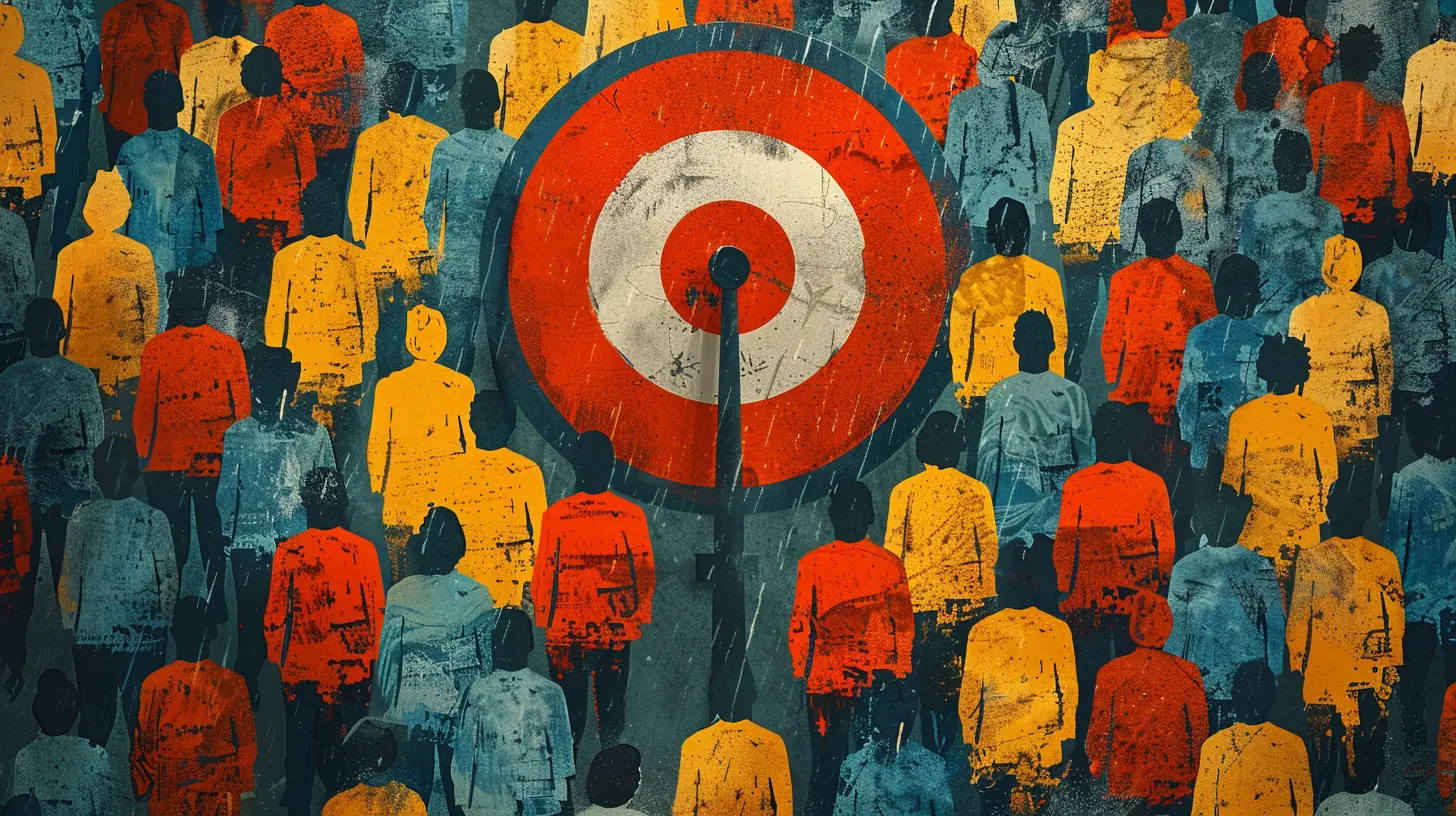How to Use Behavioral Segmentation for Hyper-Targeted Campaigns
25 September 2025
Ever feel like your marketing efforts are going into a black hole? You’re pushing ads, sending emails, creating content—but the returns? Meh. The truth is, most marketers cast their net way too wide. If you're not speaking directly to what customers want, you're just static in the background noise.
That’s where behavioral segmentation swoops in like a superhero with a data-driven cape. It’s not just marketing buzz either—this strategy lets you peek into your audience’s mind and understand exactly what makes them tick.
In this article, we’ll break down how to use behavioral segmentation for hyper-targeted campaigns without a marketing PhD. Sound good? Let’s dive in.
What Is Behavioral Segmentation, Anyway?
Before we geek out, let’s keep it simple: behavioral segmentation is grouping your customers based on what they do, not just who they are.Unlike demographic segmentation (which groups by age, gender, income, etc.), behavioral segmentation focuses on actions—think purchase habits, website activity, loyalty levels, and how they interact with your product.
It's a bit like being a detective. Instead of guessing what people might want based on their job title or zip code, you're watching how they behave and tailoring your message accordingly.
And let’s be honest—when was the last time someone bought something just because of their age? Behavior tells a much richer story.
Why Behavioral Segmentation Actually Works
Here’s the deal: not all customers are created equal. Some are just window-shopping. Some are loyal fans. Some are this close to converting.Treating them all the same? That’s marketing malpractice.
Behavioral segmentation lets you:
- Personalize your message: Speak directly to someone’s needs and stage in the customer journey.
- Increase engagement: Send content that actually resonates.
- Boost conversions: Because you’re showing the right offer to the right person at the right time.
- Improve customer retention: Keep your best customers coming back with VIP treatment.
Think of it like dating. You wouldn't propose marriage on the first date, right? Behavioral segmentation helps you pace things properly. No one likes a stage-five clinger—or a pushy brand.
The 5 Main Types of Behavioral Segmentation
Let’s break it down. These are the core ways you can slice and dice your audience based on behavior:1. Purchase Behavior
This is all about how your customers buy. Are they impulsive? Do they spend hours researching? Have they bought once or are they repeat purchasers?Examples:
- First-time buyers vs. loyal customers
- Buyers during sales only
- Subscription churners
Segment them, and you can target with relevant campaigns—like win-back emails or loyalty rewards.
2. Occasion-Based Behavior
People behave differently depending on timing (think Black Friday or birthdays). This segmentation lets you time your messages like a pro.Examples:
- Holiday shoppers
- Birthday clients
- Weekend vs. weekday shoppers
Want to send that “treat yourself” email on someone’s birthday? Occasion-based targeting makes that happen.
3. Usage Rate
Some people use your product daily, others once in a blue moon. Doesn’t it make sense to talk to them differently?Examples:
- Heavy users (VIP campaigns)
- Light users (usage tips, guides)
- Lapsed users (re-engagement emails)
High-usage customers are gold. Keep them engaged, and they’ll keep your business thriving.
4. Customer Loyalty
Loyalty isn't just about frequency—it’s about emotional connection. Segmenting your most loyal fans helps you nurture that bond.Examples:
- Brand advocates (think referral campaigns!)
- Long-time subscribers
- Customers with a high lifetime value (LTV)
Roll out the red carpet with early access, exclusive offers, or loyalty points.
5. Benefits Sought
People buy based on what they care about. While you might think your product is great because of Feature X, your customers might love it for Reason Y.Examples:
- Bargain hunters
- Quality seekers
- Eco-conscious buyers
Tailor your value prop depending on what they’re looking for. It’s not one-size-fits-all.
How to Collect Behavioral Data (Without Being Creepy)
Okay, so behavioral segmentation sounds great—but how the heck do you get this data?Here’s the good news: you probably already have a goldmine of behavioral data sitting right under your nose.
1. Website Analytics
Tools like Google Analytics or Hotjar can show you:- Page views
- Bounce rates
- Session durations
- Click paths
You can literally see how your users move through your site. Combine this with UTM tagging, and you’re golden.
2. CRM and Email Data
Your email service provider (ESP) is a behavioral treasure box.Look at:
- Open vs. click rates
- Time of engagement
- Links clicked or ignored
Send more of what works, and ditch what doesn’t.
3. Purchase History
Track:- Past orders
- Frequency
- Average order value (AOV)
Create segments for one-off buyers, repeat purchasers, or big spenders and market to them differently.
4. Customer Feedback
Surveys, reviews, and even customer support tickets reveal behavioral patterns. Ask questions like:- “Why did you choose us?”
- “Was anything missing?”
- “Would you recommend us?”
Use this intel to fine-tune your messaging and experience.
5. Social Media Interactions
Social engagement is a behavior too! If someone shares every blog post you write, you better believe that person deserves a tailored offer or shoutout.How to Use Behavioral Segmentation in Campaigns
Alright, you’ve collected your data and identified your segments. Now what?Let’s get tactical.
1. Personalize Email Marketing
This is where segmentation really shines 🌟Example:
Send an abandoned cart email with the exact product your customer left behind—and maybe throw in a discount to seal the deal.
Pro-Tip: Don’t just personalize the name. Personalize the content, layout, offer, and even the send time.
2. Dynamic Website Content
Ever visited a site where the homepage seemed tailored just for you? That’s behavioral segmentation at work.Use tools like Optimizely or HubSpot to swap out homepage content based on a user’s past behavior, location, or industry.
3. Retargeting Ads
Let’s say someone checked out your pricing page but didn’t convert.You can now retarget them with ads that address their likely objections. Maybe they need a demo video, testimonials, or a limited-time offer.
Remember: Retargeting isn’t creepy if it’s helpful.
4. Triggered Campaigns
Set up automated flows based on behavior.Ideas:
- Welcome emails after sign-up
- Educational series based on product use
- Re-engagement email to dormant users
Triggered campaigns put your outreach on autopilot while still feeling personal.
5. Content Recommendations
Netflix does this like a boss—and you should too.Show blog posts, videos, or tutorials based on what the user has already viewed. It keeps them in your ecosystem longer and gently nudges them toward a conversion.
Real-World Example: How Amazon Uses Behavioral Segmentation
Let’s geek out for a second. You know how Amazon seems to know what you want before you do?That’s behavioral segmentation at scale.
They analyze:
- Your browsing history
- What similar profiles bought
- What items you’ve added to your cart but didn’t buy
Then… boom. You get:
- “You might also like” recommendations
- Emails about items you glanced at weeks ago
- Dynamic homepage banners featuring your favorite categories
And the scarily accurate part? It works. That’s the power of data-driven personalization.
Behavioral Segmentation Pitfalls to Avoid
Before you run off to segment everything in sight, watch out for these common traps:1. Over-Segmenting
Too many micro-segments = chaos. You’ll end up drowning in complexity. Keep it manageable.2. Outdated Data
Behavior changes. If someone hasn’t clicked your emails in 2 years, maybe they’re not loyal after all.Keep your data fresh.
3. Ignoring External Context
Behavior doesn’t happen in a vacuum. Did someone abandon cart due to a price issue—or because your site crashed?Dig deeper before assuming.
Tools That Make It All Easier
If all this sounds overwhelming, don’t worry. There are tools designed to make behavioral segmentation almost fool-proof:- Klaviyo – Great for ecommerce email segmentation
- HubSpot – All-in-one CRM and marketing automation
- Mixpanel – Excellent user behavior tracking
- Segment – Integrate different behavioral data sources
- ActiveCampaign – Affordable, automation-friendly email platform
Pick the one that fits your tech stack and budget.
Wrapping It Up: Behavior Is the New Demographics
In a world where customers are bombarded by generic marketing messages, behavioral segmentation is how your brand cuts through the noise.It’s your cheat code to:
- Higher conversions
- Lower churn
- And deeply personalized experiences that build loyalty
It’s time to stop guessing and start observing.
So go ahead—watch what your customers do, segment like you mean it, and talk to them like you actually know them. Because (with behavioral segmentation), you kinda do.
all images in this post were generated using AI tools
Category:
MarketingAuthor:

Remington McClain
Discussion
rate this article
1 comments
Dixie Hamilton
This article brilliantly highlights the power of behavioral segmentation! Understanding your audience's actions can truly elevate your marketing strategy. It’s like having a secret map to their preferences! Excited to implement these insights for more relatable and targeted campaigns—connecting with customers has never felt more achievable!
October 12, 2025 at 12:00 PM

Remington McClain
Thank you for your thoughtful comment! I'm glad you found the insights on behavioral segmentation valuable. Best of luck with your targeted campaigns!


